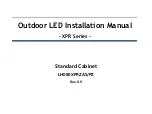
42
More on Photography
Controlling Exposure: Exposure Compensation
Cancelling Exposure Compensation
To cancel exposure compensation, choose a value of 0.
Choosing a Value for Exposure Compensation
As a rule of thumb, select
positive
values when large areas of the frame are very brightly
lit (for example, when photographing an expanse of sunlit water, sand, or snow) or
when the background is much brighter than the main subject. Choose
negative
values
when large areas of the frame are very dark (for example, when photographing a forest
of dark green leaves) or when the background is much darker than the main subject.
This is because the camera, in order to avoid extreme under- or over-exposure, tends
to lower exposure when the frame is very bright and raise exposure when the frame is
very dark, which can make naturally bright subjects look dim and naturally dark subjects
appear over-bright, or “washed out.”
1
00
0
0.3
0
0.3
14
14
Display exposure compensation menu.
2
Highlight desired value.
00
0
0.7
0
0.3
14
14
3
Exit menu (to exit without changing
mode, wait two seconds). icon is
displayed at settings other than 0.
0.3
0.3
0.3
14
14
Exposure compensation is used to alter exposure from the value suggested by
the camera. Exposure compensation can be set to values between –2.0 EV
(underexposure) and +2.0 EV (overexposure) in increments of
1 3
EV.
















































